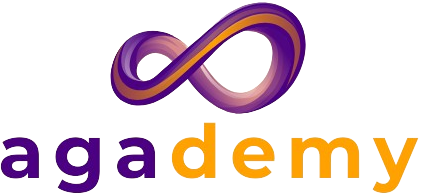
Introduction to Habits
Overview
“Introduction to Habits” is a dynamic course designed to empower individuals with essential knowledge and practical strategies for habit formation and modification. Through a blend of theory and hands-on exercises, participants will gain insights into the science behind habits and learn effective techniques for breaking old habits and cultivating new ones. By the course’s end, learners will possess the tools needed to initiate positive changes in their habits, leading to personal growth and fulfillment.
audience: People interested in self-development
responsibilities: Instructional Design, Action Mapping (Needs Analysis), Storyboarding, Visual Design, mockups, eLearning Development
tools: Articulate Storyline, CapCut, MindMup, Powerpoint
goal: Provide learners with a comprehensive understanding of habit formation and modification, empowering them to initiate positive changes in their behavior and lifestyle.


process: analysis
I followed the structured steps of the ADDIE model to carefully tweak each stage of my process. This ensured that the learning experience looked, felt, and contained content that met top-notch standards.
Step 1: Identifying the goal
At the beginning stages of crafting “Introduction to Habits,” I engaged in preliminary discussions with the Client to grasp their expectations and goals.

Step 2: Specifying the audience and creating learner personas
Navigating diverse audience demographics for “Introduction to Habits,” we crafted detailed learner personas. These personas capture varied backgrounds and preferences, guiding tailored course content and delivery methods for effective engagement.
Step 3: Identifying the Current State
Given the course’s broad audience, it’s essential to anticipate that some participants may have limited knowledge about habits. Therefore, the course should encompass foundational concepts to ensure all learners, regardless of prior experience, can grasp key principles and techniques effectively.


process: design
Step 1: scoping
Scoping a project involves defining clear learning objectives and outlining topics and sections.

Step 2: wireframing
The next step is to create wireframing, which involves sketching out the structure and layout of the course content.
Step 3: Screenplanning
Screenplanning involves mapping out the entirety of the course, detailing its core components and providing concise descriptions for each slide or screen. Additionally, icons are employed to signify whether slides incorporate text, audio, video, or images, and denote the type of interaction, if applicable.

Step 4: style guide
A style guide establishes consistent visual and design standards for a project. By following a style guide, designers ensure a unified look and feel, enhancing the overall user experience and brand identity.
Step 5: storyboarding
Storyboarding is the process of visually outlining the narrative flow and structure of a project, typically through sequential images or sketches. It involves mapping out key scenes, interactions, and transitions to provide a visual blueprint for the project’s development.

process: development
Interactive Prototypes and Full Development
Through an iterative process involving interactive prototyping and full development, “Introduction to Habits” is meticulously crafted to be inclusive, engaging, and impactful. It is designed to cater to learners of diverse backgrounds and learning preferences, ensuring that every participant, regardless of their individual characteristics, can benefit from the course’s content and approach.
Additional Features
transcript for inclusiveness: To ensure accessibility for all learners, transcripts are provided for all audio and video content, allowing individuals with hearing impairments or language barriers to fully engage with the course material.
various interactive exercises: From quizzes to reflective prompts, a variety of interactive exercises are integrated throughout the course, catering to diverse learning styles and preferences while promoting active participation and knowledge retention.
storytelling: Engaging narratives and real-life examples are woven throughout the course, providing context and relevance to the concepts discussed and fostering deeper connections with learners.
Personalization: Learners are encouraged to personalize their learning experience by setting goals, tracking progress, and applying course concepts to their unique circumstances, promoting ownership and relevance.
key takeaways after each module: To reinforce learning and facilitate application, key takeaways are provided at the end of each module, summarizing key concepts and actionable insights for immediate implementation in daily life.
Incorporating these additional features elevates the learning experience, fostering deeper engagement, critical thinking, and skill development among learners.














